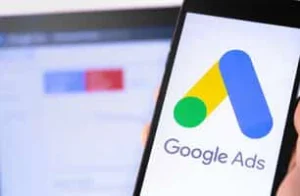Green Clicks, Grey Areas: The Environmental Impact of PPC

Sam Jacobs
Paid Search Director
6 min read
13th June 2024
The internet’s infrastructure currently consumes about 10% of the world’s total electricity, with projections suggesting it could reach 20% by 2025.
Online advertising contributes around 10-20% of the total energy consumption of the internet infrastructure, which highlights the substantial environmental footprint of the digital advertising industry, according to Earth.Org.
These statistics underscore the significant environmental impact of digital advertising, emphasizing the need for more sustainable practices within the industry.
The Basics of PPC Advertising
PPC advertising involves advertisers paying a fee each time one of their ads is clicked. It is a powerful tool for driving traffic and generating leads, and it comes in various forms:
Text Ads: Simple, text-based advertisements that appear in search engine results.
Display Ads: Visual advertisements, including images or animations, shown on websites within a network.
Video Ads: Multimedia advertisements that play before, during, or after video content.
Each type of PPC ad uses different amounts of energy and resources, impacting the environment in unique ways.
The Environmental Impact of Text Ads
Explanation
There is a misconception that sustainable practices, which often involve more meticulous and thoughtful content creation, don’t impact SEO rankings due to perceived inefficiencies.
Energy Consumption:
Text ads are the most energy-efficient form of PPC advertising. They require minimal data transmission and server processing power, resulting in lower energy consumption.
Resource Use:
The production of text ads involves fewer resources compared to more complex ad formats. No additional media (images or videos) needs to be created, stored, or transmitted.
Pros and Cons:
Pros: Low energy consumption, minimal resource use, quick load times, and efficient for mobile users.
Cons: Less engaging compared to visual ads, potentially lower click-through rates.
The Environmental Impact of Display Ads
Energy Consumption:
Display ads consume more energy than text ads due to the need to transmit visual content. The energy required to load and render images or animations on users’ devices contributes to their higher environmental footprint.
Resource Use:
Creating display ads involves the use of graphic design software and digital resources, which have their own environmental costs. Additionally, storing these visual assets requires more server space.
Environmental Benefits and Drawbacks:
Benefits: Higher engagement rates due to visual appeal.
Drawbacks: Increased energy use, higher resource consumption for ad creation and storage.
The Environmental Impact of Video Ads
Energy Consumption:
Video ads have the highest energy consumption among PPC ad types. Streaming video content requires significant bandwidth and server power, contributing to a substantial environmental impact.
Resource Use:
Producing video ads involves extensive resources, including high-definition video equipment, editing software, and significant storage capacity. The carbon footprint of video production is considerably higher compared to text and display ads.
Strategies to Minimize Impact:
Use lower resolution videos to reduce data transfer.
Compress video files to minimize bandwidth usage.
Opt for shorter video ads to lessen server load and energy consumption.
Myths and Misconceptions
Misconception 1: All PPC Ads Have the Same Environmental Impact
Reality: The energy and resource consumption vary significantly between text, display, and video ads.
Misconception 2: Digital Ads Have a Negligible Environmental Footprint
Reality: Digital advertising contributes to data center energy use, which is a growing concern as internet usage increases.
Misconception 3: Sustainable PPC Means Sacrificing Effectiveness
Reality: Sustainable PPC strategies can be highly effective when implemented thoughtfully, with a focus on efficiency and engagement.
Sustainable PPC Practices
Choosing Sustainable Ad Formats:
Prioritize text ads for their low environmental impact.
Use display ads judiciously, balancing visual appeal with energy efficiency.
Limit the use of video ads to essential campaigns and optimize their production and delivery.
Reducing Environmental Footprint:
Implement ad frequency capping to avoid excessive ad displays.
Utilize server-side ad insertion to streamline content delivery.
Monitor and optimize ad performance to ensure efficient use of resources.
Tools and Resources:
Use carbon footprint calculators to measure the impact of your PPC campaigns.
Leverage ad platforms that offer sustainability reporting and optimization tools.
The Environmental Impact of PPC
By understanding the differences between the environmental impact of different advert types, businesses can make informed decisions to adopt more sustainable PPC practices. Prioritizing low-impact ad types and optimizing ad delivery can significantly reduce the environmental footprint of digital marketing campaigns.
If you’re ready to prioritize environmental responsibility without compromising effectiveness in your advertising, contact GrowRoom for a consultation.
Categories:
Content, SEO, UK
Frequently asked questions
Why is the environmental impact of PPC ads important?
Understanding the environmental impact helps businesses make more sustainable choices in their advertising strategies.
How can I measure the sustainability of my PPC campaigns?
Use tools and resources that track energy consumption and resource use associated with your ads.
What are some sustainable alternatives to traditional PPC ads?
Consider text ads and optimized display ads that consume less energy and resources.
Get in touch
Contact Form
Get our digital marketing insights straight to your inbox


